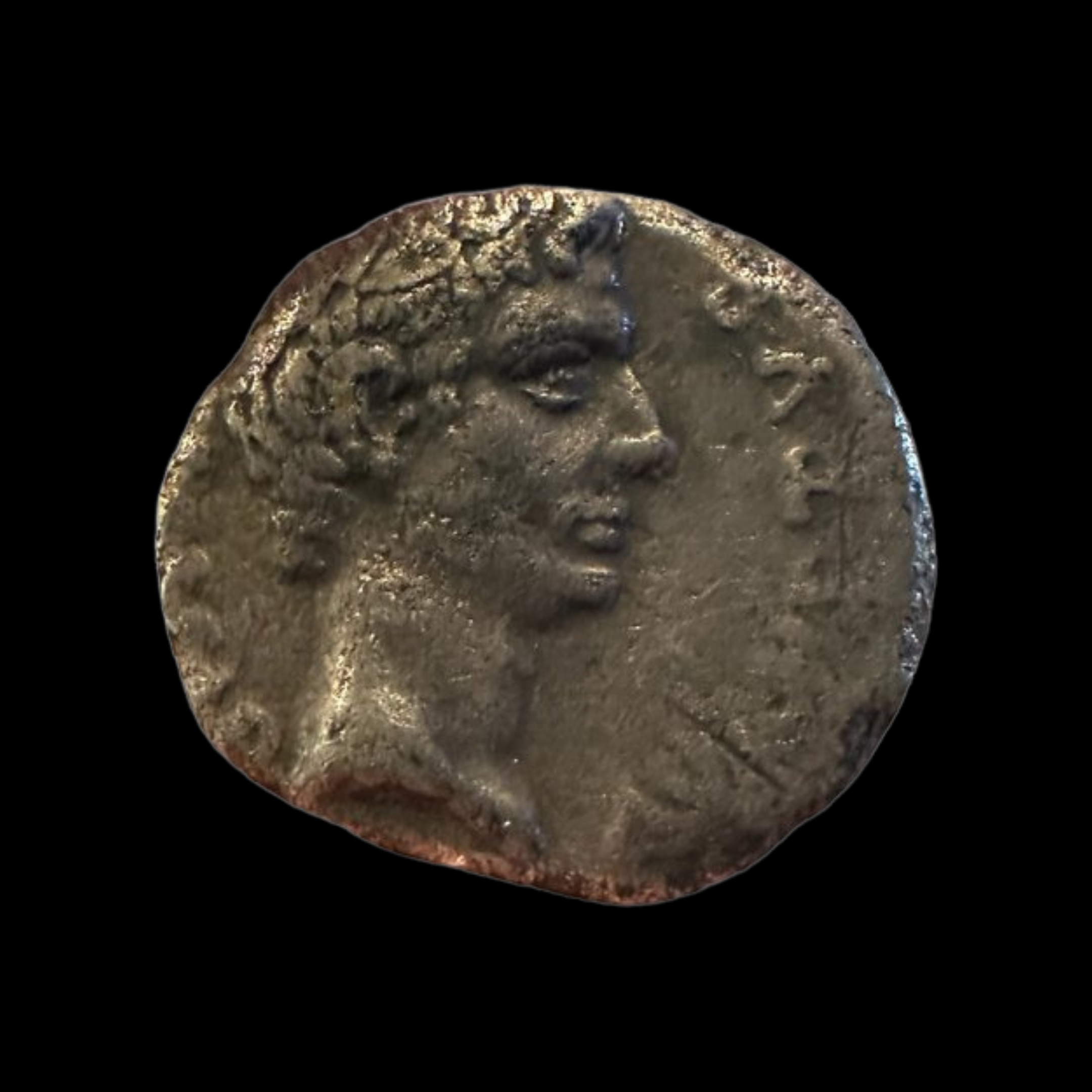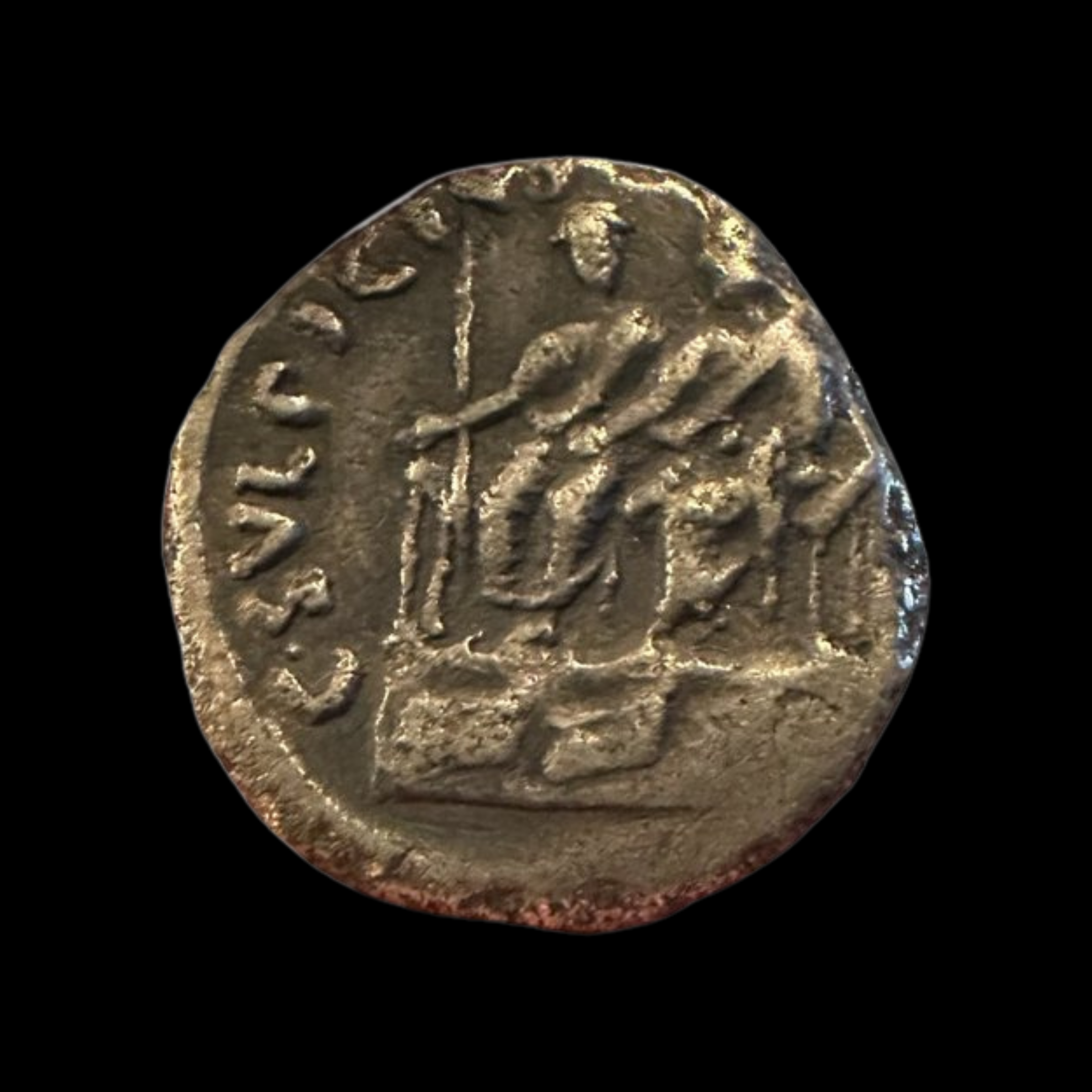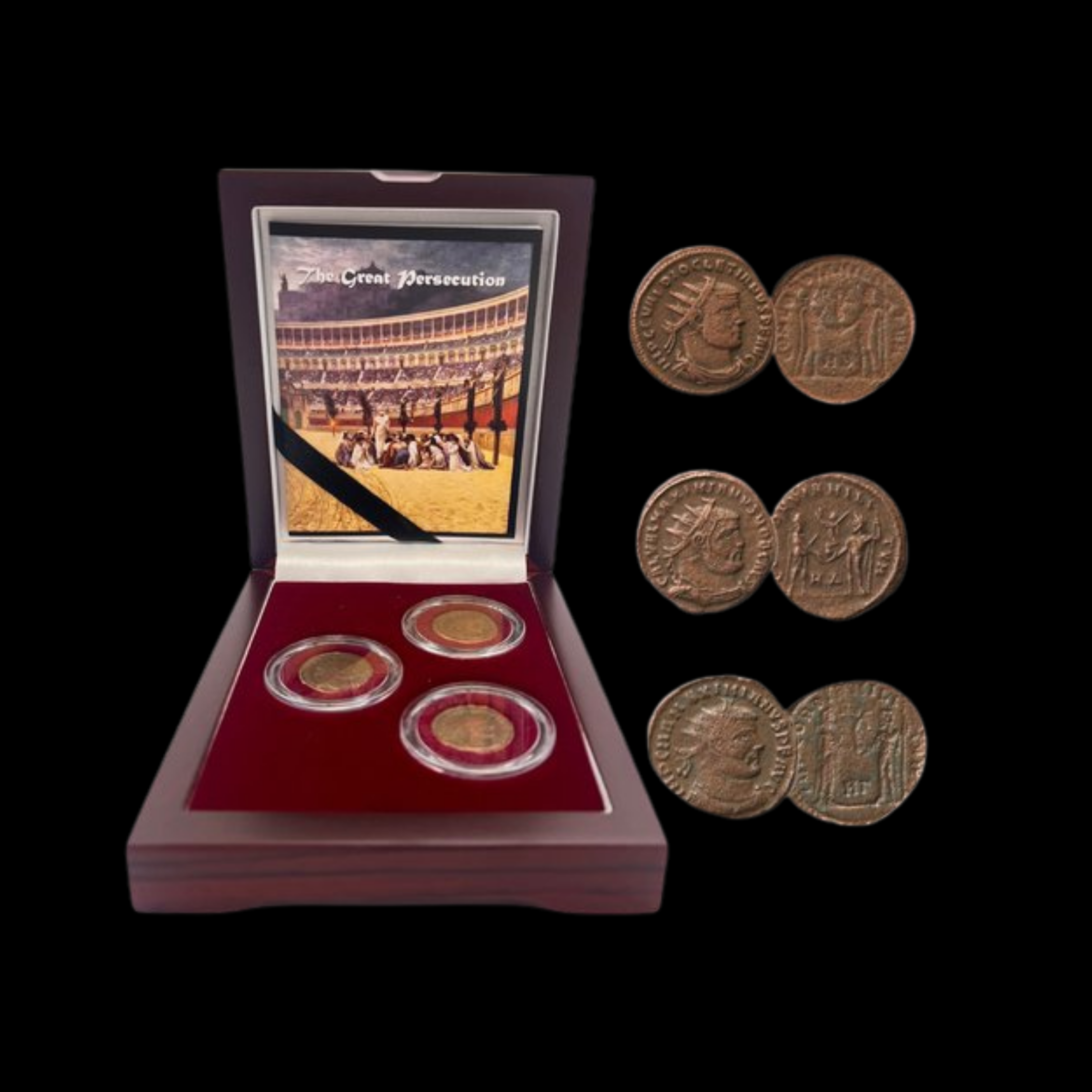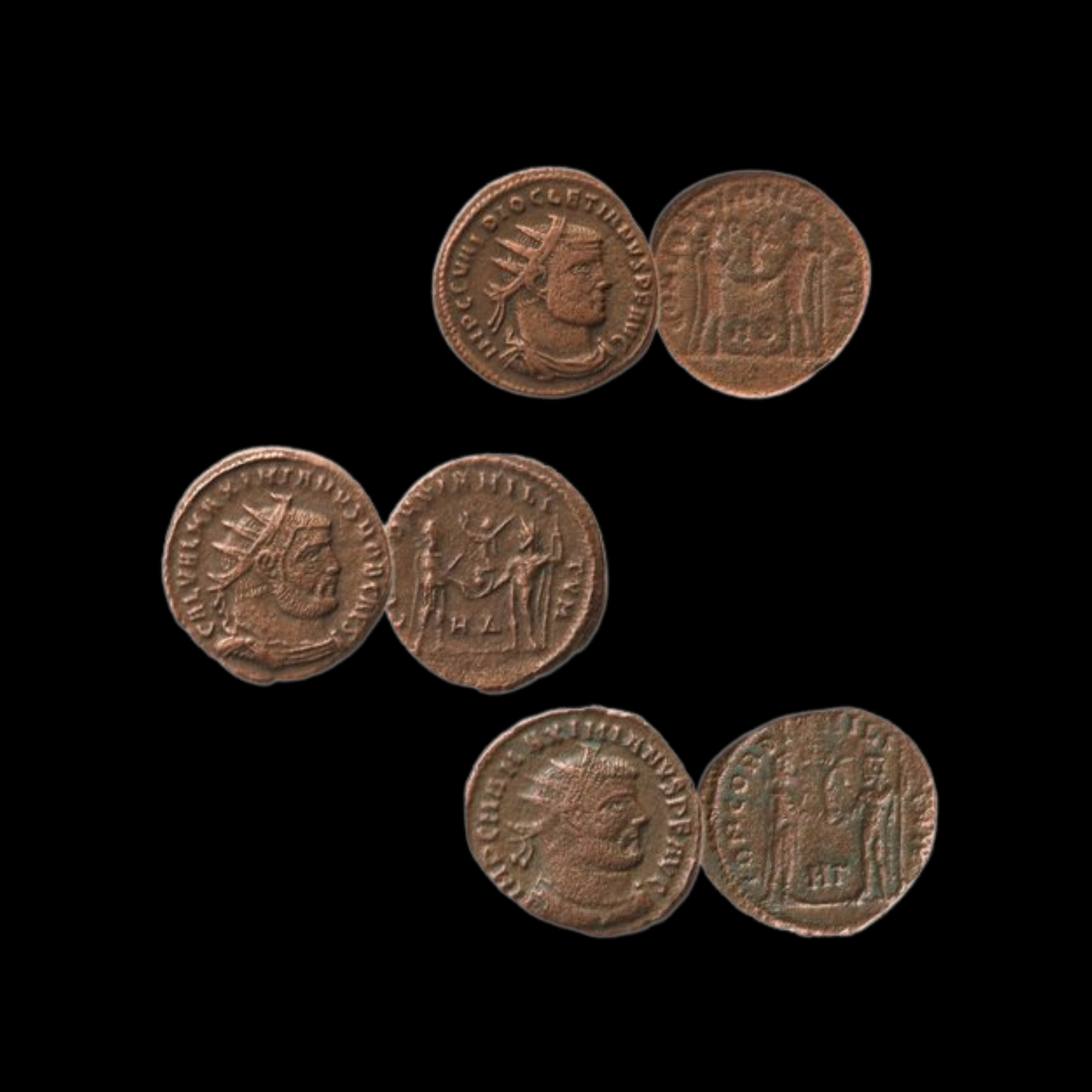 Image 1 of 5
Image 1 of 5

 Image 2 of 5
Image 2 of 5

 Image 3 of 5
Image 3 of 5

 Image 4 of 5
Image 4 of 5

 Image 5 of 5
Image 5 of 5

Roman Bronze Coin Commemorating Constantinople (about 1,685-1,695 years ago)
This bronze coin was issued by Constantine the Great and his sons to commemorate the founding of Constantinople, the new capital city built on the site of ancient Byzantium. The coin represents an important transitional period when the Roman Empire was shifting its power center eastward and gradually transforming from a pagan to a Christian society, blending elements of both traditions during this remarkable cultural evolution.
Coin Description:
Front side: Helmeted bust of the personification of Constantinopolis (the city goddess) facing left, dressed in military attire and carrying a spear, surrounded by an inscription of her name
Back side: The goddess Victoria (Victory), depicted in a manner evolving toward Christian angelic imagery, standing on a prow of a ship with wings spread
Technical Details:
Bronze composition
Denomination: Commemorative bronze issue (likely a follis or reduced follis)
NGC certified
Minted between 330-340 AD
Condition as certified by NGC
Historical Significance: This coin commemorates one of the most pivotal moments in late Roman history: the establishment of Constantinople (modern Istanbul, Turkey) as the new imperial capital in 330 AD. Built on the strategic crossing between Europe and Asia, Constantinople would remain the eastern empire's capital for over a thousand years. What makes this coin particularly fascinating is how it visually documents the religious transition occurring under Constantine. While the personification of the city as a goddess (Constantinopolis) represents traditional Roman religious practices, the reverse's depiction of Victoria shows how pagan symbols were being subtly transformed into Christian imagery. The figure gradually evolved from the classical Victory goddess into what resembled a guardian angel, reflecting Constantine's delicate balancing act of introducing Christianity while not alienating the empire's still-substantial pagan population.
This bronze coin was issued by Constantine the Great and his sons to commemorate the founding of Constantinople, the new capital city built on the site of ancient Byzantium. The coin represents an important transitional period when the Roman Empire was shifting its power center eastward and gradually transforming from a pagan to a Christian society, blending elements of both traditions during this remarkable cultural evolution.
Coin Description:
Front side: Helmeted bust of the personification of Constantinopolis (the city goddess) facing left, dressed in military attire and carrying a spear, surrounded by an inscription of her name
Back side: The goddess Victoria (Victory), depicted in a manner evolving toward Christian angelic imagery, standing on a prow of a ship with wings spread
Technical Details:
Bronze composition
Denomination: Commemorative bronze issue (likely a follis or reduced follis)
NGC certified
Minted between 330-340 AD
Condition as certified by NGC
Historical Significance: This coin commemorates one of the most pivotal moments in late Roman history: the establishment of Constantinople (modern Istanbul, Turkey) as the new imperial capital in 330 AD. Built on the strategic crossing between Europe and Asia, Constantinople would remain the eastern empire's capital for over a thousand years. What makes this coin particularly fascinating is how it visually documents the religious transition occurring under Constantine. While the personification of the city as a goddess (Constantinopolis) represents traditional Roman religious practices, the reverse's depiction of Victoria shows how pagan symbols were being subtly transformed into Christian imagery. The figure gradually evolved from the classical Victory goddess into what resembled a guardian angel, reflecting Constantine's delicate balancing act of introducing Christianity while not alienating the empire's still-substantial pagan population.
This bronze coin was issued by Constantine the Great and his sons to commemorate the founding of Constantinople, the new capital city built on the site of ancient Byzantium. The coin represents an important transitional period when the Roman Empire was shifting its power center eastward and gradually transforming from a pagan to a Christian society, blending elements of both traditions during this remarkable cultural evolution.
Coin Description:
Front side: Helmeted bust of the personification of Constantinopolis (the city goddess) facing left, dressed in military attire and carrying a spear, surrounded by an inscription of her name
Back side: The goddess Victoria (Victory), depicted in a manner evolving toward Christian angelic imagery, standing on a prow of a ship with wings spread
Technical Details:
Bronze composition
Denomination: Commemorative bronze issue (likely a follis or reduced follis)
NGC certified
Minted between 330-340 AD
Condition as certified by NGC
Historical Significance: This coin commemorates one of the most pivotal moments in late Roman history: the establishment of Constantinople (modern Istanbul, Turkey) as the new imperial capital in 330 AD. Built on the strategic crossing between Europe and Asia, Constantinople would remain the eastern empire's capital for over a thousand years. What makes this coin particularly fascinating is how it visually documents the religious transition occurring under Constantine. While the personification of the city as a goddess (Constantinopolis) represents traditional Roman religious practices, the reverse's depiction of Victoria shows how pagan symbols were being subtly transformed into Christian imagery. The figure gradually evolved from the classical Victory goddess into what resembled a guardian angel, reflecting Constantine's delicate balancing act of introducing Christianity while not alienating the empire's still-substantial pagan population.
The history of Constantinople covers the period from the Consecration of the city in 330, when Constantinople became the new capital of the Roman Empire, to its conquest by the Ottomans in 1453.
Constantinople was rebuilt practically from scratch on the site of Byzantium. Within half a century, thanks to the gigantic construction projects of the time, rapid population growth, the development of trade and crafts, its status as a capital city, and the efforts of the 4th century Roman emperors, Constantinople became one of the largest cities in Europe and the Middle East. The rich and prosperous "megalopolis of the Middle Ages" became the largest political, cultural, and economic center of a vast empire, but it declined over time. After the fall of Rome in the 5th century, Constantinople became the capital of the Eastern Roman Empire, which persisted for nearly a millennium, preserving a degree of Roman and Hellenistic tradition.[Note 1] The history of Constantinople in the Byzantine era was filled with tumultuous political events: popular uprisings and palace intrigues, assassinations of emperors and changes of ruling dynasties, months-long sieges and campaigns against powerful western and eastern neighbors. For many centuries (until the 8th century), Constantinople was the greatest center of brilliant culture and science in medieval Europe, far surpassing other world capitals in the level of education, activity of spiritual life and development of material culture.
One of the most characteristic features of political life in Constantinople was the constant struggle for power between different groups of the aristocracy, army, merchants, and clergy. The elite of the capital was an extremely unstable and diverse group, as access to the top of Byzantium was open to natives of all social classes. Many capital nobles were not only not ashamed of their commoner or provincial origins, but were actually proud of the fact that they had been able to work their way up from the bottom of society to the pinnacle of power. Moreover, even the imperial throne could be occupied by a native of the people as a result of a palace conspiracy, a love affair, a successful marriage, a rebellion of the army or the townspeople. Examples of this in Byzantine history was a lot, emperors by fate became even simple soldiers, who served up to the military leaders of medium rank, butcher or peasant, who was later engaged in horseback riding and fist fights. In Constantinople, the contrast between the poverty of the common people and the wealth of the aristocracy, the imperial court, and the clergy was particularly striking. The city was rightly called "the main center of luxury and poverty in the whole East and West".















